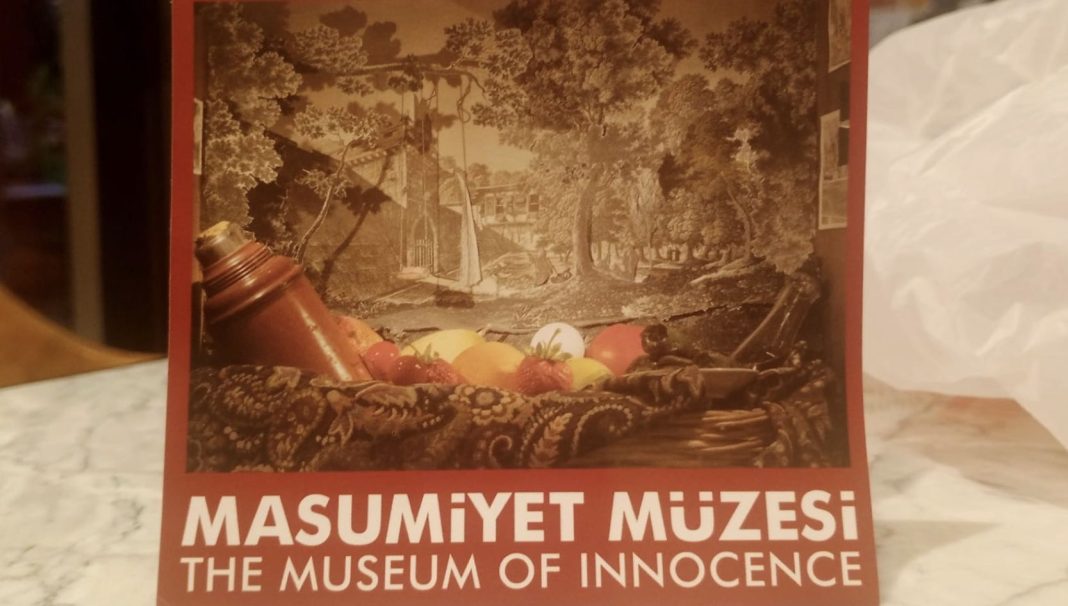By Janet Ekstract
İSTANBUL (GOLDENHORN AGENCY)- For those who aren’t well versed in literature, Orhan Pamuk is one of the world’s most celebrated authors – a Nobel laureate and the founder of a museum that opened in 2012 and still stuns with its inimitable charm. Like poetry in motion, Pamuk has taken the heart of his novel Museum of Innocence to the next level with a meticulously crafted mini-museum and is an ode to the main characters in his novel – Kemal and Fusun. A love story set amid the 70s in the wealthy Istanbul district of Nisantasi, Pamuk manages to weave a tale that mimics reality as closely as it can, with all the embellishments of memorabilia quite creatively and cleverly staged within the Museum of Innocence.
Tucked away in the charming, historical neighborhood of Cukurcuma in the back streets of Istanbul, the Museum of Innocence paraphernalia are displayed in a 19th century house that Pamuk bought, that took 13 years to complete, and that is based on his 2008 novel. The Museum of Innocence takes readers on a journey into the hearts and minds of one family and their friends whose lives play out in vastly different ways, lending the novel its penchant for melancholy, romance and a deep emotional resonance that lingers within each and every relic displayed so meticulously within the museum bearing its name.
Upon entering the museum, what strikes the eye is a vast plexiglass display of various and sundry cigarette butts, in varying arrays of sizes with the distinct mark of lipstick on their tips – an ode to the moments Kemal and Fusun shared together. As the accompanying excerpt from the novel reads: “Kemal was proud of his 4,213 cigarette butts and whenever he brought them out, he would tell me their stories. He carefully dated each one, making additional notes, here and there, some of which I used in the novel. Here you will find the relevant notes under each cigarette butt, written out in my own handwriting as Kemal requested.” One of the most memorable displays on the top floor of the mini-museum is the dress Fusun wore, replete with the beads she wore around her neck. It is as if the dress was just worn and hung up meticulously to be worn again, on any given day.

Pamuk has effortlessly weaved an epic memory of Istanbul in the 70s into the 80s with his literary masterpiece that smacks of the kind of eavesdropping one could only do had one been privy to the actual events of the characters’ lives. Each display represents a chapter of the novel, meticulously and imaginatively arranged with just the exact objects that Pamuk describes in each scene in the novel. According to Pamuk, while writing the novel, he collected more than a thousand artifacts to represent the story that include a vintage flowered dress, various historical newspaper clippings and photos, vintage watches and a myriad of objects that all represent a certain space and time.
It is time that stands out within the displays at the Museum of Innocence because a certain era of a certain time can only be captured in the memories of things that were once used. The novel’s protagonist and narrator, Kemal Basmaci is the collector of the things that remind him of his one and only love, Fusun who he has given tribute to within the walls of this small museum. Pamuk scoured junk shops in the back streets of Istanbul and other parts of the world to assemble the collection of objects that bring the Museum ofInnocence to life. Though Pamuk told a journalist a decade ago that the book and museum are mostly about sadness and the “melancholy of the period” – what is reflected inside its walls is anything but.
The Museum of Innocence stands as a brilliant testament to time, love and the possibilities of a life well lived, regardless of the agony Kemal endured after Fusun was gone. The charm of each piece, meticulously placed in its individual space, reflects a quaint charm and nostalgic nuance that is not only moving but wholly life-affirming, not as Pamuk interpreted it at all. Standing within the space on each floor, allows one to reflect on a trip back in time, peeking into someone else’s story. The display cases remind Kemal of his one true love, Fusun. And as Kemal reflects: “Let everyone know I lived a very happy life.”




